Archive for the ‘Salute’ Category


-
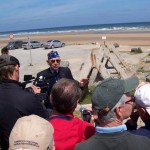
- Dr. Harold Baumgarten speaks to a Museum tour group at Normandy, France, in 2006.
-

- A photo from Dr. Harold Baumgarten's oral history for The National WWII Museum.
-

- A service-era photo of Private Harold Baumgarten.
-
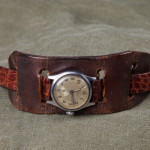
- The wristwatch Private Harold Baumgarten wore ashore at Omaha Beach on D-Day. From the Collection of The National WWII Museum.
-
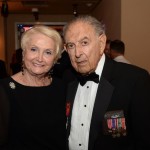
- Dr. Harold Baumgarten with his wife, Rita, at the 2015 Victory Ball.
-
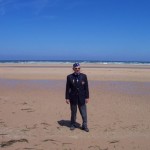
- Dr. Harold Baumgarten at Omaha Beach with a Museum tour in 2006.
Private Harold “Hal” Baumgarten, Company B, 116th Regiment, 29th Infantry Division, landed on Omaha Beach on D-Day, June 6th, 1944. Part of the first waves of the assault force, Baumgarten endured murderous enemy fire, was wounded five times in just 32 hours of fighting, and had to be evacuated by hospital ship.
The Museum’s Digital Collections contain a minute-by-minute personal account of his harrowing D-Day experience. Watch the oral history here—https://goo.gl/Yo8jaF—and join us in a heartfelt final salute to an American hero, retired physician, and dear friend of The National WWII Museum. Dr. Baumgarten died December 25, 2016, at age 91.
One of the Museum’s earliest and most enthusiastic supporters, Dr. Baumgarten was a featured speaker in The National D-Day Museum’s 2000 grand opening ceremonies. The wristwatch he wore ashore at Omaha, given to him by his father, has been on display at the Museum ever since. In 2015 he received the Silver Service Medallion, awarded to veterans and those with a direct connection to World War II who have served our country with distinction, at the Museum’s Victory Ball. He was a frequent speaker at Museum events, including the International Conference on World War II, and returned to “Bloody Omaha” several times with Museum tours of the Normandy beaches.
Of the 30 men on Dr. Baumgarten’s landing craft on D-Day, 28 did not survive the invasion, a chilling fact cited by Museum president and CEO Gordon H. “Nick” Mueller, PhD, in remarks after receiving the French Medal of Honor in May 2016.
“Many years later, Harold would make a point of reciting the full name and hometown of fellow soldiers who didn’t come home,” Mueller said. “‘I want them never to be forgotten,’ he would say.”
According to Dr. Baumgarten’s obituary at Legacy.com, his WWII service—for which he received a Purple Heart and two bronze stars, among other honors—inspired him to devote his life to “paying back,” first by becoming a teacher, then a doctor.
His vow to honor the memories of the men who fell around him on D-Day was evident in scores of interviews, his own writing, countless speaking engagements around the world, and his dedication to the Museum.
Dr. Baumgarten credited Museum cofounder Stephen E. Ambrose with encouraging him to write and speak about his war experiences, and it was through the Ambrose connection that Dr. Baumgarten’s journey onto and across Omaha Beach reached its widest audience: at the D-Day Museum’s June 6, 2000 opening, Saving Private Ryan director Steven Spielberg told Dr. Baumgarten that the film’s unforgettable beach combat scenes were drawn from the recorded interviews Ambrose had done with the veteran.
“He is the real thing,” said Saving Private Ryan star Tom Hanks at the Museum’s opening.
We send our condolences to Dr. Baumgarten’s wife, Rita, who frequently accompanied him at Museum events and on tours, as well as all of his family and many friends.



On October 14, 1944 the USS Houston became the first major ship attacked by Japanese pilots off the coast of Formosa, what is now called Taiwan. The USS Houston left for combat in April 1944 joining Task Force 58, the main striking force in the US Navy in the Pacific Theater. The boat and its crew participated in shore bombardments and covered landings of the island hopping campaign across the Pacific including the Marianas, Roto, Guam, Iwo Jima, Chichi Jima, Philippines, Anguar, Luzon, Mindanao, Leyte, and Samar.
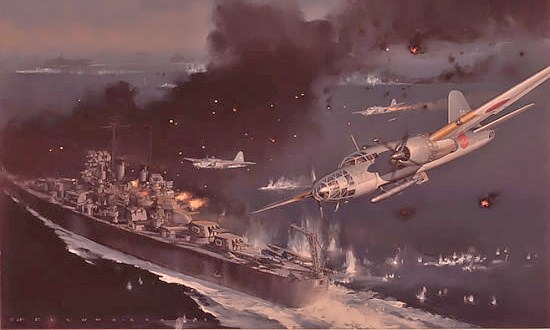
Ordeal of the USS Houston from Jack Fellows’ book on the ship.
It was just after sunset on October 14, 1944 that the USS Houston’s was struck by a Japanese torpedo after successfully shooting down three of the four attacking planes. The ship was immediately dead in the water without power. During this time, the typical protocol was for the crew to abandon ship and let the vessel sink. The USS Houston was leaning over in the water, and the men were ordered to evacuate the ship.
The vast majority of the crew of 992 survived, but 4 officers and 51 enlisted perished. The Japanese reported that the USS Houston had sunk resulting in newspaper headlines describing that success on the Japanese Home Front. But in fact, the crew of the ship refused to let the USS Houston sink, and over 700 hundred of the crewmen and 33 of the officers were transferred to accompanying US ships and the ship was stabilized to tow. The boat was towed to Ulithi by USS Boston and USS Pawnee and eventually made its way to Brooklyn, New York for repairs that were completed just after the war’s end in 1945. The ship received 3 battle stars for its service during World War II.
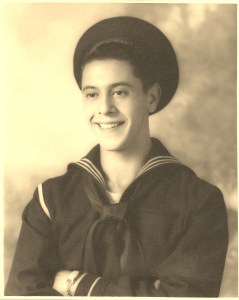
Joseph Ignatius “J.I” Monte during WWII.
To commemorate the 70th Anniversary of this event and to fulfill the last wishes of one of the USS Houston’s crew members, daughter Lori Besselman and son Frank Monte of Jim “J.I.” Monte will be taking a voyage to the coast of Taiwan to put the ashes of their father at rest where he lost his crew.
Born in 1925 J.I., a New Orleans native, joined the US Navy in September 1942 at the age of 17 after much fight with his father to sign for his underage enlistment. After becoming temporarily blind while working as a Welder-Burner at the Delta Shipbuilding Corporation in New Orleans, his family decided they might as well send him to war before he got killed in the shipyard. He served in New Orleans until he was 18 when he signed on for duty. He traveled to Norfolk, Virginia for training and joined as a plank member, the first crew, of the crew of the USS Houston in December 1943.
During the torpedoing by the Japanese on October 14, 1944, J.I. sprained his ankle due to the deck heaving up on the high side of the ship. Because of his injury, J.I. was thrown overboard by his shipmates where he was able to swim to a life raft. He spent the night in the raft with others from the ship before they were picked the following destroyer USS Grayson.
On October 17 J.I. transferred to the cruiser USS Birmingham, and the following day, October 18, he transferred to the escort carrier, USS Rudyerd Bay. The Rudyerd Bay transported him to Ulithi Atoll. There he boarded the USS Typhoon and traveled to Pearl Harbor. Upon arrival in Pearl Harbor, the Typhoon received a welcome by Admiral Nimitz and the Navy Band playing “Anchors Aweigh.” Jim described the scene as well as quite comical because the USS Houston survivors received the welcome while wearing nothing but their undergarments, boxers and undershirts. When the crewmembers were evacuated they were only given those items to wear.
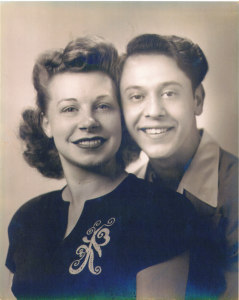
Verna and J.I. or “Jim” as she called him. When they met in California, J.I. had his initials JIM for Joseph Ignatius Monte sewn on his clothes. Verna thought it was for his name being “Jim” and continued to call him that throughout their life together.
After returning from the Pacific Theater in December 1944, J.I. was stationed at the Alameda Naval Air Station outside of Oakland, California for the remainder of the war. It was here where he met his wife Verna, who was from Iowa, while riding the trolley. Verna was also working at the Naval Air Station painting instrument dials on planes. In July 1945 the couple married, and they ventured back to J.I.’s hometown of New Orleans upon his discharge in October 1945. Together they had 5 children.
From his time in the Navy to working for the US Treasury and the US Customs Department, J.I. accumulated over 40 years of services to the government. When he retired at the age of 65, he stayed active by volunteering and serving as the Gate Chairmen for the Destrehan Plantation Festival. Alongside his wife Verna, he delivered hot meals to people living with AIDS through the New Orleans AIDS Task Force multiple times a week.
Like many WWII veterans, he didn’t talk much about his experience in war until later in life. His wife Verna described that “as he got older, the time he spent in the service became more important to him.” From that time, he became more involved with the Houston Association and hosted a reunion for the ship in New Orleans at the Westin Hotel in 1997 with at least 150 survivors and their families in attendance. He even began proudly wearing a WWII Veterans Cap that was purchased from the Museum’s gift shop. It honored him greatly to receive words of gratitude from people both young and old for his service to our country. In 2010, he received another great honor from Governor Bobby Jindal when he was awarded the Louisiana Veterans Medal of Honor for his service during WWII. Jim “J.I.” Monte passed away on January 18, 2012.
The children of Jim, Lori and Frank, are excited to have made this venture to Asia to fulfill their father’s wishes. They grew up with him saying, “I want my ashes to be in the South China Sea,” and now they have made that wish come true.
-
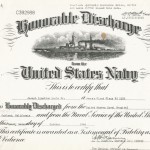
- The discharge papers of J.I.
-
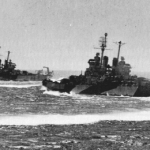
- USS Houston during a shore bombardment of Guam (closer to the camera) in a high speed turn with sister-ship Vincennes.
-
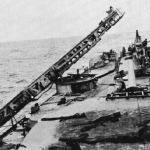
- View looking aft showing the damage to the starboard catapult after the first torpedo hit.
US Navy Official photograph.
-
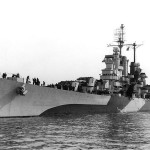
- USS Houston (CL 81) Off the Norfolk Navy Yard, Virginia, 11 January 1944.
-
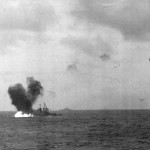
- Japanese aerial torpedo hits the ship's starboard quarter, during the afternoon of 16 October 1944. This view shows burning fuel at the base of the torpedo explosion's water column. Houston had been torpedoed amidships on 14 October, while off Formosa, and was under tow by USS Pawnee (ATF 74) when enemy torpedo planes hit her again. USS Canberra (CA 70), also torpedoed off Formosa, is under tow in the distance.
Official U.S. Navy Photograph, from the collections of the Naval Historical Center #NH 98826.
-
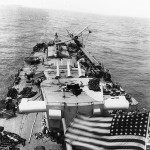
- View looking aft, showing damage to the ship's stern area resulting from a torpedo hit amidships received off Formosa on 14 October 1944. This photo was taken while Houston was under tow, but prior to the second torpedo hit on 16 October. Note OS2U floatplane that had been jarred off the port catapult, breaking its wing on impact with the aircraft crane.
Photograph from the Bureau of Ships Collection in the U.S. National Archives #19-N-106304.
-
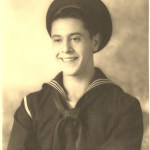
- J.I. during his service.
-
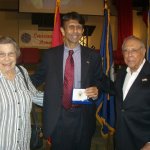
- J.I. receiving the Louisiana Veterans of Medal of Honor from Governor Jindal alongside his wife Verna on April 16, 2010.
-
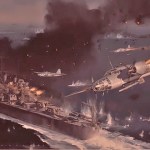
- Ordeal of the USS Houston from Jack Fellows' book on the ship.
-
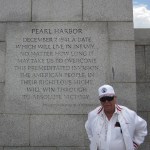
- J.I. at the World War II Memorial with the Louisiana Honor Air in May 2011.
-
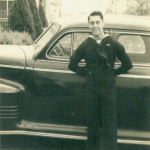
- J.I. during his service.
-
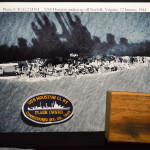
- As a plank member of the USS Houston, J.I. received a piece of the ship's plank when it was decommissioned and scrapped in 1959.
-
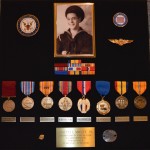
- The medals J.I. was awarded for his service in the US Navy.
-
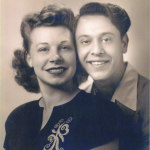
- Verna and J.I. or "Jim" as she called him. When they met in California, J.I. had his initials JIM for Joseph Ignatius Monte sewn on his clothes. Verna thought it was for his name Jim and continued to call him that throughout their life together.



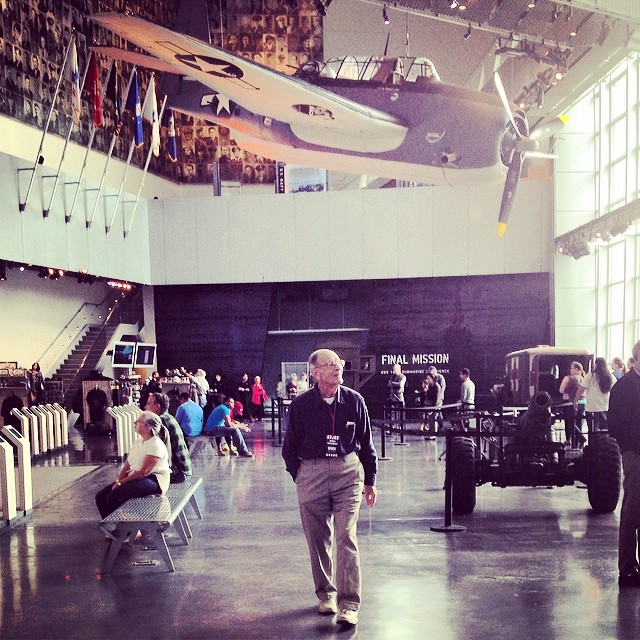
Everett D. Craycraft on his 90th birthday walking among the warbirds hanging in the US Freedom Pavilion: The Boeing Center. Photo courtesy of Lindsey Smith Wilcox.
Every day The National WWII Museum honors the achievements and courage of the Greatest Generation for future generations. On March 9, 2014, we were especially thrilled to have WWII veteran, Everett D. Craycraft, and his family celebrating his 90th birthday with us at the Museum over 70 years after he began fighting in the war that changed the world.
Born in Mt. Sterling, Kentucky in 1924, Craycraft grew up the oldest of seven boys during the Great Depression. In September 1942 when he was 18 years old, he answered his patriotic call and enlisted in the US Navy in order to play his part in protecting our nation’s liberty.
After boot camp training in the Great Lakes and placement in Washington at Sand Point Naval Air Station and in Bremerton, Craycraft entered the most frightful part of service—the combat zone. He served for 15 months in the South Pacific on the USS Natoma Bay CVE 62, a small aircraft carrier which was awarded six bronze battle stars and 2 unit citation badges. He was then assigned to Service Division 101 operating an LCM, a 50 ft boat made by Higgins Industries in New Orleans. They served Admiral Halsey’s carrier fleet at Leyte Gulf. Towards the close of the war, he returned stateside and served as a Ship’s Rigger at the San Diego Naval Base.
His service to our country did not end with our nation’s victory though. Craycraft continued to serve in the Naval Reserve until 1952 and went back to school to learn Topographic Drafting on the GI Bill while he started his family. Following school, he began working for a large oil company moving to six different states where he last worked in New Orleans, Louisiana.
Today, Craycraft is retired and living in Slidell, Louisiana. Still active in learning about and honoring the members of his generation, he enjoys visiting the Museum to be reminded of his generation’s heroic accomplishments. He favors the majestic views of the warbirds in the US Freedom Pavilion: The Boeing Center and the familiar models of the types of vessels in which he served that are on display throughout the Museum. We are happy to be a place for Craycraft and other WWII veterans to be honored and to reminisce about their great accomplishments. Thank you for your service, Everett D. Craycraft, and best wishes to you in your years to come!
-
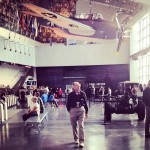
- Craycraft on his 90th birthday walking among the warbirds hanging in the US Freedom Pavilion: The Boeing Center.
-
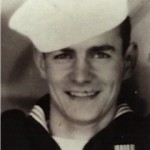
- Everett D. Craycraft during WWII in 1944. Photo courtesy of Deborah Craycraft Stevens.
-
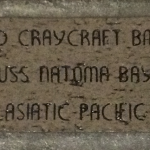
- Everett D. Craycraft's brick on our Road to Victory located in the atrium of the Museum's Louisiana Memorial Pavilion.



As part of the ongoing preparations for the new US Freedom Pavilion: Boeing Center, The National WWII Museum is in the process of restoring a P-51 Mustang that will be painted with the “Red Tails” markings of the 332nd Fighter Group, a unit of the now-celebrated Tuskegee Airmen.
Museum Trustees Jeffrey Carter and Todd Ricketts are leading the charge to raise the funds required to complete the restoration.
Carter recently posted this appeal on his blog:
George Lucas is releasing a film soon about the Tuskegee Airman. I cannot wait to see it. It’s a fabulous American story that is even more compelling because of the racism that the Tuskegee Airman had to overcome at home, and in the Army of their country. The National WWII Museum started undertaking a project over a year ago to celebrate the contribution of the Tuskegee Air Corps to World War Two. My fellow board member, Todd Ricketts, and I are heading up this project. That project needs your help.
Read the rest of this entry.
Donate now to support the restoration project.
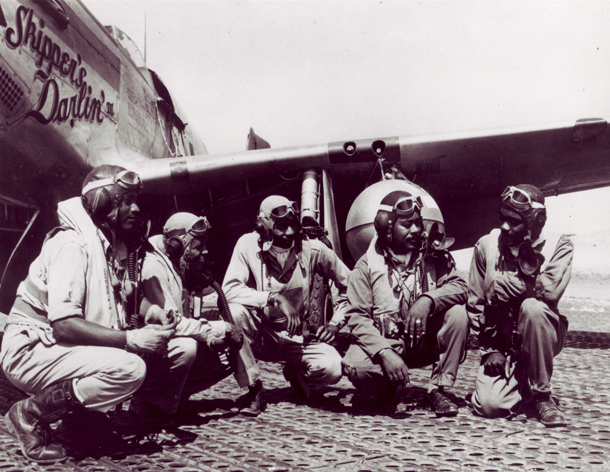



The Museum partnered with New Orleans-based Jeep dealership Bergeron Auto and Operation Homefront Louisiana on a three-month promotion to benefit Louisiana’s current service members, wounded warriors and their families who reside in the state. First manufactured in 1945, the Jeep became an icon of WWII. Known for their dependability, Jeeps served our troops in every theater of the war and were used by each of the Allied countries in the fight for freedom and democracy.
On December 17, the final day of the promotion, Bergeron Auto presented a $15,000 donation check to the Museum as well as a check for $7,000 to Operation Homefront Louisiana.
We’d like to thank Bergeron Auto for the generous donation that will help us continue to tell the story of the brave men and women who fought for our country during WWII.
Learn more about how you can help a service member and their family by visiting www.operationhomefront.net.


































